By Roy Lin
The Long Range Operator Challenge (LROC) is a match held in the northeastern corner of Washington State that has the very specific mission of bridging the divide between the military and civilian long range shooting communities. In doing so, match organizers hope that active duty military teams and snipers can learn and benefit from the experience of retired military snipers and instructors as well as talented civilian long range marksmanship enthusiasts in open competition. The 2016 LROC marks the third year of this unique competition’s existence, and it has grown every year since inception.
In order to accomplish its specific mission, the LROC has two distinct components: a pre-competition train up with retired operational military snipers and instructors working with active duty military personnel, followed by a competition open to all experienced long range riflemen. For 2016, the LROC had Army snipers from Alaska, Hawaii and Washington in attendance, as well as a strong civilian showing of long range enthusiasts, including the cast and crew of the long range marksmanship themed TV show “Long Range Reality”.
Unlike previous years, the weather was a bit more forgiving, if just on the first day. Unseasonably warm and sunny weather cut down on the physical and mental strain during the first half of competition. Unfortunately, the unusual warmth resulted in large shifts in the snow pack which caused some problems with targets and equipment set up weeks before in depths of winter. Match organizers did their best to keep stages consistent for all competitors, and one stage was later cut from the match due to shifting conditions. The first day had the most movement and land navigation, with teams crossing varied terrain with mild elevation changes between stages. The trails cut through a few remaining snow fields, and a lot of mud. Unlike previous years, teams did not have to hike to the top of the mountain and face extreme elevation change, but the distances covered between the stages a bit greater than before. By the second day though, the challenging wet and cold weather of the pacific northwest returned for the mountainous stages which mostly had shooting from awkward and elevated positions, but distances between stages were a lot more forgiving.
Aside from the physical challenge, stages were all timed, with target observation varying from range officers pointing targets out to the shooters, to only giving shooters azimuths. The challenge of spotting targets at unknown distances, ranging, and engaging them was definitely very real as there were some targets that many teams burned a lot of time trying to spot. Typical stages on day one would be 8-10 minutes long, with teams being given target azimuths from firing positions, required teams locate, range, and engage targets within that time frame using the equipment the carried. The mental pressure of a ticking clock, and the need to get both shooters to engage targets was sufficient enough to cause issues for nearly every team: hard to stay steady and search for a target when you know every second you spend not finding the target is a second spent not ranging or even engaging a target. Adding to the challenge, stages with awkward positions required to see and hit targets quickly exposed lack of the sufficient equipment for some teams: shooting sticks, packs, bipods, tripods, and teammate’s shoulders were all employed with regularity in the stages.
At the LROC, there were many experienced civilian and military long range shooters on had acting as range officers and support staff. One keen observation from a young army sniper turned Designated Marksman was that it was fairly easy to tell between the active duty Army teams which teams were comprised of Sniper School graduates and which weren’t. The primary distinguishing factor was not marksmanship or gear but rather, mindset and communication ability. Trained teams were more fluid in working together in achieving goals cohesively, as well as working together in all aspects of target engagement, from locating, ranging, to engaging. I will say that the Army teams comprised of shooter who had not yet gone to Sniper School were also, very effective in their efforts by my eye, though the difference in fluidity was great enough for ranger officers with operational sniper backgrounds to note them.
After two days of competition, the final results were as follow:
Army veterans Michael Furrer (father of Olympic Marksman Amanda Furrer) and Clint Sharp took 1st place, and graciously donated thousands of dollars worth in prize table winnings to one of the competing Army sniper teams. Carl Taylor and Brent Webley, a civilian team took second place and donated their winnings to another Army team, and third place match winners Ron Sinnema and Lucas Beitner also donated their prizes to yet another Army team. The highest ranking military team was that of Matt and John from the 3rd Battalion 21st Infantry out of Ft Wainwright Alaska, congratulations on your excellent work!
Analyzing final match scores, it is fairly clear that the civilian teams excelled in this match, with the top 10 (out of 25) scoring teams all being civilian teams. However, the military teams, who were trained up before the match in the latest TTPs in engaging moving targets from Joint Sniper Performance Improvement Methodology (JSniPIM) were able to more effectively engage moving targets on the stages using moving targets from InMotion Targets. The consistent speed of the InMotion targets during training and competition allowed for quick learning for all parties as the consistent speed removed one more calculation from engagement.
The main thing I took away from the LROC is that civilian hobbyists and professionals who take the pursuit of long range seriously practice their craft frequently, obsessively, and extract every single possible advantage they can in the pursuit of ballistic excellence. In effect, with a singular desire driven by pursuit of excellence, civilian marksmen are developing technologies in software and hardware which can be of use to military marksmen who operate in a much different realm. While the heat and pressure of competition can never compare to the demands of the battlefield, techniques developed in competition to cope with limited time and increased pressure can benefit military marksmen quite easily. Further more, the raw pursuit of external ballistics in load development, projectile development, and internal ballistics has a direct crossover to military applications.
The Long Range Operator Challenge is a unique, focused competitive event put on by qualified staff and instructors in a fairly remote part of the United States of America. I would recommend it fully, to organizations, units, and individuals with the desire to test and expand their knowledge and capabilities in the pursuit of long range marksmanship.


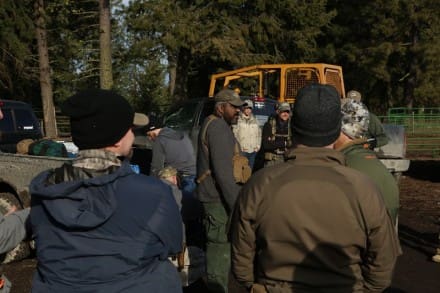
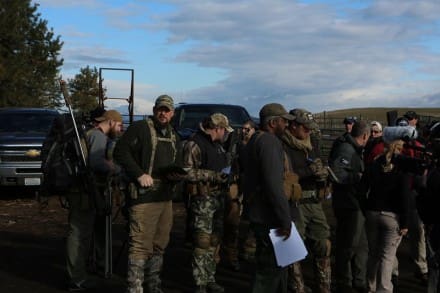
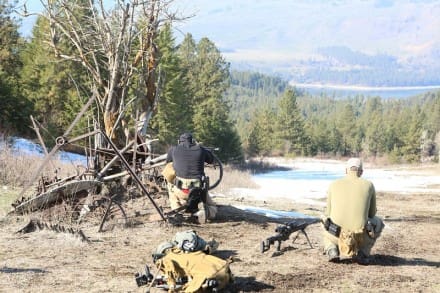
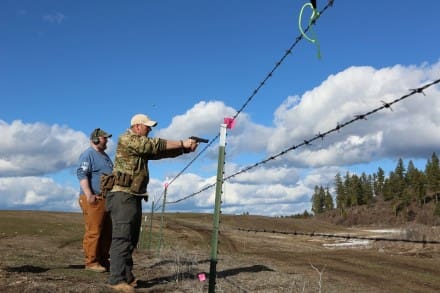
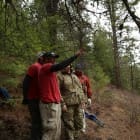
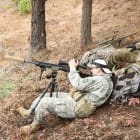
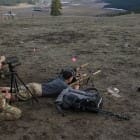
Really great write up! And here I am just trying to attend the SDM course this year.
Awesome write-up. THANKS!
The folks that put the LROC on are top-notch.
I keep telling myself that Im going to participate at some point…I just put it on my calendar and sent an invite to a shooting buddy. Lots of PT and Land Nav practice between now and then!
Would be neat to see which rifles and optics the winners used
Donating the prizes to the active duty teams…that is super awesome.
The winning team shot Rainier Arms rifles in 6SLR and 6.5 Creedmoor. They both had Orias Chassis built by Mega arms and Killer Innovations. The scopes were Vortex HD Gen2 Razors 4.5-27. The rifles were built by master gunsmith Ken Hagen of H&H Precision. Barrels were both Benchmark Barrels. Clint shot the Berger 105 Hybrid Mike shot the 139 Lapua Scenar.
Thank you, and congrats on the win!
Nice. There’s always something that conflicts with my sked, but I’ve been wanting to go help out for the last couple. Next year!